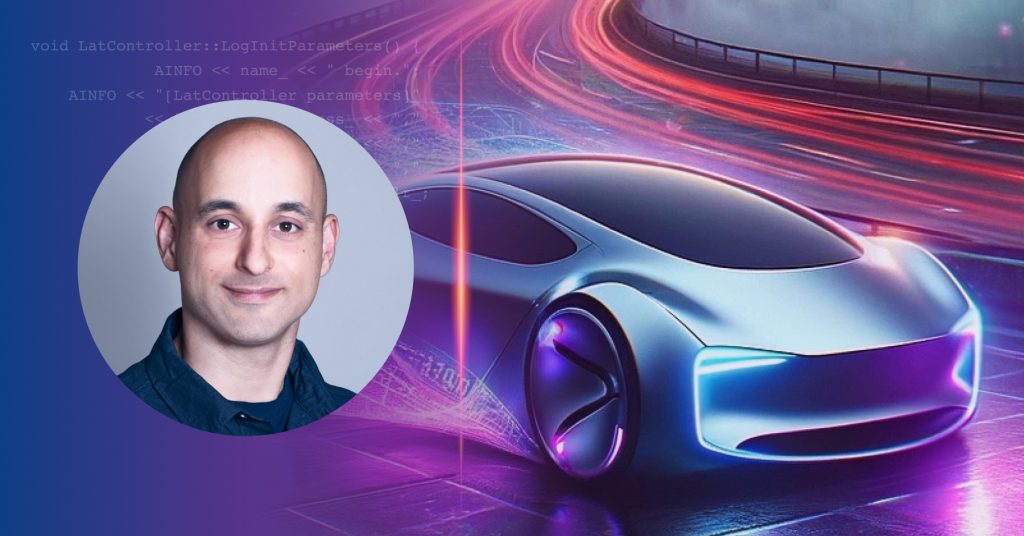With technology and automation developing at an extraordinary rate, accelerated even further by the effects of the pandemic, traditional automotive manufacturers are working hard to bring innovation into everything they do. The most prevalent trend in 2022 is autonomous vehicles (AV), closely followed by connectivity and electrification. Perhaps unsurprisingly, nine out of the top 10 automotive innovation trends are technological.
Automotive OEMs (original equipment manufacturers) are in a prime position to instill a culture of innovation more deeply within their businesses. It’s something that’s so pervasive within the industry that they can and should be taking inspiration from that atmosphere, adopting new technologies and ways of working, and bringing in new people in order to keep things fresh.
Innovation in automotive right now
According to Forbes, the automotive world is set to completely transform in the next two decades, much as it did in the late 19th century. At this time, the world’s major cities were awash with manure as the use of horse-drawn vehicles reached its peak, but by 1912 Henry Ford had resolved to solve this issue with the motor car.
Another dramatic shift of this type seems feasible when you consider the speed and breadth of innovation in this industry. Electric vehicles (EVs) are now commonplace, and Deloitte’s global EV forecast shows a compound annual growth rate of 29% over the next decade. Additionally, EV sales growth is expected to expand from 2.5 million in 2020 to 11.2 million in 2025, and 31.1 million by 2030.
Gartner has reported that the automotive electronics sector will experience the biggest semiconductor compound growth rate up to 2024, at 9.3%. Modern vehicles have around 8,000 semiconductor chips and over 100 electronic control units; these currently carry over 35% of the total vehicle cost, but that is expected to rise to 50% by 2030.
Software-defined vehicles
Then there are the vehicle manufacturers that have had technology and innovation at their core from the beginning. Software-defined vehicle companies like Tesla are taking a different approach and are constantly thinking outside the box. Its EVs are some of the fastest in the world, it’s working on transformative energy projects to help limit fossil fuel demand, and it even considers elements like how professional drivers will be affected by autonomous self-driving. That in itself is innovative.
While more traditional OEMs are embracing a similar shift, their approach is fundamentally different. The automotive industry has been at the forefront of technological innovation since it started but with the rise in software-defined vehicles, there’s a need for more innovative out-of-the-box thinking than ever. The key is to build a culture of innovation within the a company, whether it’s been around for 100 years or just 10. This means embracing new technology, leaning on artificial intelligence tools, and looking for innovative ways to stand out in a market that’s more competitive than ever.
Challenges
According to Forbes, some of the newer 21st-century vehicle manufacturers are challenging — or even overtaking — the major established players. Ford ($53bn), BMW ($62bn), and GM ($82bn) have Tesla ($64bn), Nio ($70bn), and BYD ($65bn) nipping at their heels, meaning traditional OEMs have to move quickly as the automotive industry continues to evolve.
The biggest challenge lies in having to become, essentially, a software company. Many OEMs have traditional mechanical production company DNA, and turning that into something much more software-focused is a difficult thing to pivot to. Despite this, companies such as BMW, Porsche, Hyundai, and many others have been able to embrace a culture that doesn’t just look at ways to innovate when it comes to their products but also in their manufacturing methods, over-the-air-updates, their sales processes and more.
Investment in AI tools — such as Vehicle Software Intelligence — infrastructure, and employee training will all be key for traditional manufacturers when it comes to building a culture of innovation.
How to build a culture of innovation
We’ve established that the main difference between traditional OEMs and the more modern ones is that the latter started as software companies, and the former is taking steps to pivot their approach. Overcoming this challenge starts with getting the right people on your team. This is what creates the new kind of thinking that’s required to keep up with modern automotive demands. Other ways to build a culture of innovation include:
- Employee training and workshops that focus on new ideas
- The adoption of cutting-edge tools that improve processes
- Embrace AI and other technologies that can increase automation and free up employees for tasks that need a human touch
- Adopt agile processes to speed up the delivery of software and updates
It’s also important to know when to innovate. Consumers don’t necessarily want a vehicle that looks and drives like it’s straight from science fiction, but perhaps technology can improve the driving experience in more subtle ways — such as in advanced safety features or vehicle upgrades delivered over the air.
Additionally, if AV is the biggest trend in automotive right now, then AI is an ideal area to focus on. In fact, AI and machine learning are important across the entire value chain — not just when it comes to driverless vehicles. These technologies can improve time to market, development processes, and quality control. Software-led innovation is an opportunity that allows OEMs to maintain competitive advantage and growth. To learn more about Vehicle Software Intelligence and how it can solve your own challenges, contact Aurora Labs today.






 11 min read
11 min read
